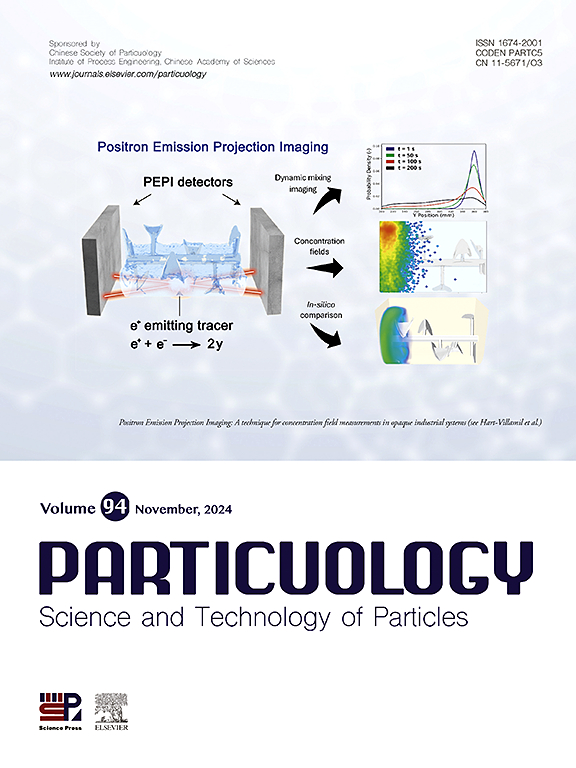用电子能量损失谱法探测低原子序数催化剂的精细结构
IF 4.1
2区 材料科学
Q2 ENGINEERING, CHEMICAL
引用次数: 0
摘要
低原子序数催化剂由于具有成本效益和优异的化学稳定性,在环境管理、催化反应和能源转化等领域得到了广泛的应用。深入研究这些催化剂的复杂结构,建立其构效关系,揭示其催化机理,是开发新型高效催化剂的基础。电子能量损失光谱(EELS)是一种关键的电子显微镜技术,由于其高空间分辨率和对低原子序数元素的敏锐灵敏度,在解剖低原子序数催化剂的精细结构方面具有独特的优势。本文综述了EELS在探测低z催化剂精细结构中的作用,包括技术基础、优势和催化剂分析中的具体应用案例。EELS可以精确定位催化剂中低z元素的位置、化学环境和电子属性,从而为揭开催化机制的神秘面纱和制定创新催化剂提供重要见解。此外,本文还对EELS技术在低原子序数催化剂的详细结构研究中的潜在进展进行了探讨,并对该研究领域的发展前景进行了展望。本文章由计算机程序翻译,如有差异,请以英文原文为准。

Probing the fine structures of low atomic number catalysts by using electron energy loss spectroscopy
Low atomic number catalysts have gained widespread application in areas such as environmental management, catalytic reactions, and energy transformation, thanks to their cost-effectiveness and superior chemical stability. An in-depth exploration of the intricate structures of these catalysts, establishing their structure-activity relationships, and revealing their catalysis mechanisms are fundamental for developing novel and efficient catalysts. Electron energy loss spectroscopy (EELS), a pivotal electron microscopy technique, uniquely excels in dissecting the fine structures of low atomic number catalysts, since its high spatial resolution and acute sensitivity to elements with low atomic numbers. This review summarizes the role of EELS in probing the fine structures of low-Z catalysts, encompassing the technological underpinnings, advantages, and specific use cases in catalyst analysis. EELS can pinpoint the location, chemical surroundings, and electronic attributes of low-Z elements in catalysts, thus offering crucial insights for demystifying catalytic mechanisms and formulating innovative catalysts. Furthermore, this review delves into the potential advancements of EELS technology in the detailed structural study of low atomic number catalysts, hinting at a promising future for this research field.
求助全文
通过发布文献求助,成功后即可免费获取论文全文。
去求助
来源期刊

Particuology
工程技术-材料科学:综合
CiteScore
6.70
自引率
2.90%
发文量
1730
审稿时长
32 days
期刊介绍:
The word ‘particuology’ was coined to parallel the discipline for the science and technology of particles.
Particuology is an interdisciplinary journal that publishes frontier research articles and critical reviews on the discovery, formulation and engineering of particulate materials, processes and systems. It especially welcomes contributions utilising advanced theoretical, modelling and measurement methods to enable the discovery and creation of new particulate materials, and the manufacturing of functional particulate-based products, such as sensors.
Papers are handled by Thematic Editors who oversee contributions from specific subject fields. These fields are classified into: Particle Synthesis and Modification; Particle Characterization and Measurement; Granular Systems and Bulk Solids Technology; Fluidization and Particle-Fluid Systems; Aerosols; and Applications of Particle Technology.
Key topics concerning the creation and processing of particulates include:
-Modelling and simulation of particle formation, collective behaviour of particles and systems for particle production over a broad spectrum of length scales
-Mining of experimental data for particle synthesis and surface properties to facilitate the creation of new materials and processes
-Particle design and preparation including controlled response and sensing functionalities in formation, delivery systems and biological systems, etc.
-Experimental and computational methods for visualization and analysis of particulate system.
These topics are broadly relevant to the production of materials, pharmaceuticals and food, and to the conversion of energy resources to fuels and protection of the environment.
 求助内容:
求助内容: 应助结果提醒方式:
应助结果提醒方式:


